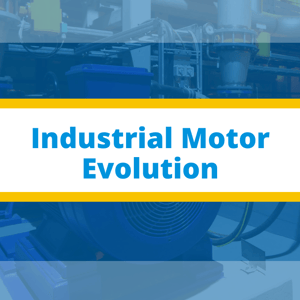 Motors have been the cornerstone of industrialization and automation. About 45% of energy generated is consumed by motor loads globally, enunciating the hardware’s importance in today’s world. Over the past 30 years, motors have greatly evolved. The advent of modern processing tools allows manufacturers to get a clear idea as to how motor performance can be improved and tailored for specific applications. Furthermore, the growth of smart manufacturing techniques allows users to monitor process performance in real-time, giving them clearer insights and information required to boost productivity.
Motors have been the cornerstone of industrialization and automation. About 45% of energy generated is consumed by motor loads globally, enunciating the hardware’s importance in today’s world. Over the past 30 years, motors have greatly evolved. The advent of modern processing tools allows manufacturers to get a clear idea as to how motor performance can be improved and tailored for specific applications. Furthermore, the growth of smart manufacturing techniques allows users to monitor process performance in real-time, giving them clearer insights and information required to boost productivity.
National Electric Motor Association, or NEMA, and the US Department of Energy have long steered industrial motors’ design and manufacturing processes. Whether it’s a synchronous motor, induction motor or a single/three phase motor, the motor industry has come a long way. If we take a look three decades ago, efficiency standards were nascent and seldom enforced, while today they form core values of any industry.
For instance, users purchasing 1 – 500 horsepower motors must ensure it is rated at NEMA Premium Efficiency Levels. A prime factor for energy efficient innovations in the motor industry has been the rising cost of energy. This has made such improvements a necessary to keep profits high.
In addition, breakthroughs in the analysis of airflow within motors that have allowed development of a rigid shaft motor at two-pole speeds. Operating motors at 3600 rpm or at a variable speed range through VFDs presented hurdles with respect to meeting the increased vibrations. Rigid shaft motors have allowed motors a power rating of up to 8000 hp, minus the vibratory issues.
These innovations can be summed up as follows:
- Greater efficiency for induction motors
- Standardization of design
- Optimized two-pole design to meet noise requirements
- Growth of brushless permanent magnet motors
- Rigid shaft motors allowing improved airflow to increase power outputs by up to 40 percent within the same motor frame
While motors have evolved in the last three decades, their control mechanism has also come a long way. VFDs have also matured over the years, with raised operational efficiencies, alleviated harmonics and integration within modern SCADA systems that have complimented the monitoring, control and lifespan of industrial motors.
Interested in learning more? Visit our website www.premierautomation.com, or talk to one of our specialists today.




